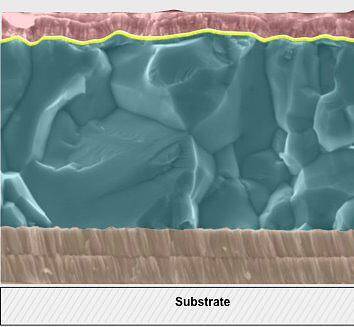Siva Power, known as Solexant Corp until November last year, has announced a new high efficiency for the thin-film copper-indium-gallium-selenide (CIGS) PV technology it has been developing. The 18.8% efficiency – comparable to silicon-based PV devices – was achieved on laboratory-scale cell of size 0.5 cm2 and was independently confirmed by the National Renewable Energy Laboratory (NREL).
Such small cell sizes are not uncommon for proof-of-concept studies. Even if final efficiencies on commercial, large-scale modules are not as high, the achievement is significant from a cost standpoint. Siva Power is hoping that its technology will eventually help it achieve a price point of under $0.40 per watt – significantly lower than other silicon or thin-film based technologies.
The development is particularly interesting considering that Siva Power, in its previous avatar as Solexant Corp, was heavily invested in a completely different thin-film materials technology, the cadmium-telluride (CdTe) technology, which is used by thin film market leader, First Solar. After cancelling its expansion plan to build a 100MW CdTe production line in the US, it instead tripled its R&D budget to investigate a range of thin-film technologies that allowed for a lower cost per watt pathway. After considering GaAs, InP, CZTS and CdTe technologies, the company decided to reinvent itself as Siva Power and adopt CIGS technology due to its attractive long-term cost advantages in February 2013.
It has now been only a year since that announcement and Siva Power has already demonstrated an impressive laboratory efficiency and is now seeking to build a 300 MW manufacturing facility. This is larger than any other thin-film production line by a factor of 3 and easily bigger than most crystalline silicon production lines by a factor of 10.
With other companies typically 5 years or more to reach such efficiencies, Siva Power looks well positioned to beat the majority of CIGS manufacturers at the pace of development and production scaling. In achieving 18.8 percent efficiency, Siva Power has also nearly equalled the cell performances of renowned international research institutes such as NREL, the Swiss Federal Laboratory for Materials Science and Technology (EMPA) and Center for Solar Energy and Hydrogen Research (ZSW), who have been involved in CIGS research for over 20 years. Says CEO, Brad Mattson, “We plan to break the world record this year, and the trajectory indicates we have a good chance.”
All such CIGS efficiency records over the past two decades, including the high efficiency attained by Siva Power, have been possible through the use of multi-stage co-evaporation – a process used for depositing the thin films of materials used to construct the cell. Emphasizing that scaling this technology is key to achieving low costs, Mattson says, “Two years of data-driven research and analysis has led us to pursue a co-evaporated CIGS via monolithic integration on glass technology.”
Image Credit: Siva Power
Mattson claims the technology is ready for manufacturing, “One interesting point is that our average efficiency is relatively close to this maximum. In other words, we are not selecting an outlier to get a record. This indicates the process is more stable and repeatable than others think CIGS would be, more transferable to manufacturing”. Emphasising further that the company is focused on manufacturing and not breaking records, he says, “..we are testing the process we want to transfer to manufacturing, not a specialized process designed to achieve records.”
Sharing Mattson’s optimism for a CIGS future in the PV market, Siva Power’s advisory board member, Dr. Rommel Noufi stated, “It has been frustrating to see CIGS technology breaking efficiency records for many years, but not see that technical success translate into success in the commercial arena. In Siva Power I see the technology, the team, and the technical and business leadership to bring CIGS to the scale it deserves.”
Top image via Siva Power
© 2014 Solar Choice Pty Ltd
- Future of Utilities – Part 1: The death of base-load generators - 11 September, 2014
- Sharp enters energy storage market with SmartStorage - 18 August, 2014
- Phinergy extends electric car range with metal-air battery technology - 13 August, 2014
